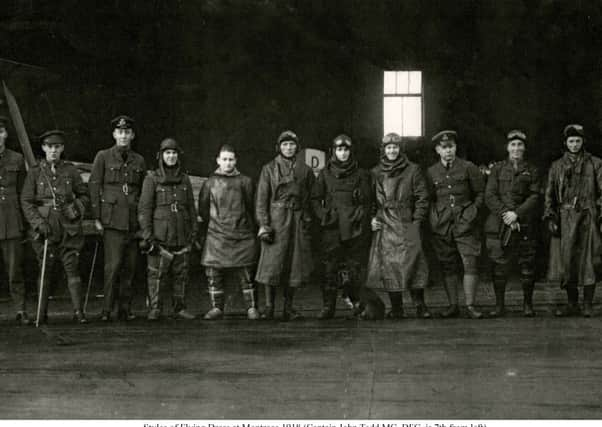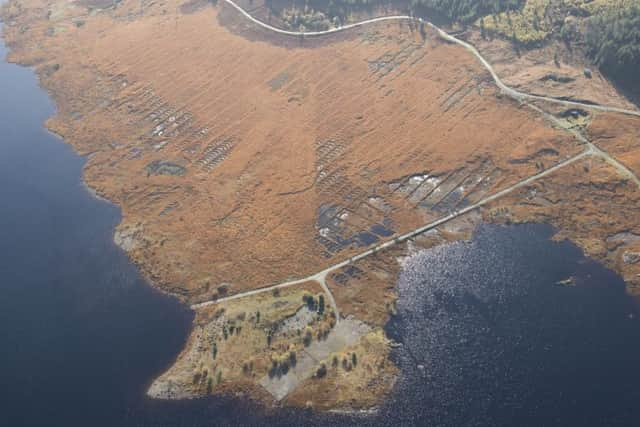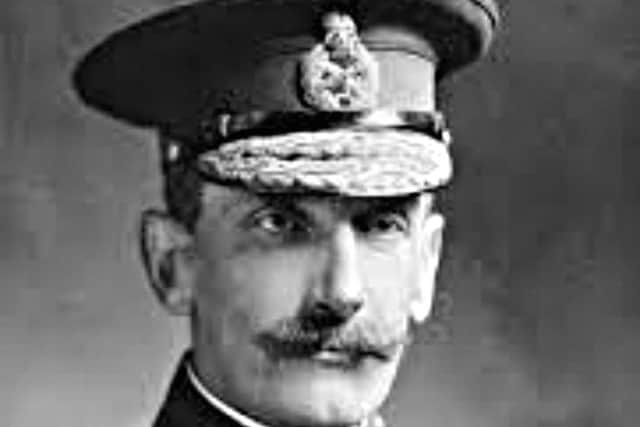'˜Â£3 million scandal' of lost First World War airfield


Around 3,000 men, including up to 1,200 German Prisoners of War, were deployed to build the new First World War aerial warfare school in September 1916 with homes and large parcels of land requisitioned from local people for the job.
Soon, new roads and a stretch of railway were in place to bring in supplies. Accommodation to house 500 men across 18 barrack blocks was also built with a sewage works and a 400-seat cinema, complete with tip up seats, also constructed.
Advertisement
Hide AdThe school complex was ordered by Colonel Sefton Brancker, brigadier general of the Royal Flying Corps, who was appointed Deputy Director of Military Aeronautics as the role of aircraft intensified on the Western Front.


Inspired by an aerial training school at a lake near Bordeaux region, a search began for a suitable site on home turf began with Loch Doon chosen in early 1916, given its remote location and the surrounding steep slopes of Craigencolon and Cullendoch hills. Rail-mounted targets were to zig-zag down the hillside to simulate manoeuvring enemy aircraft, according to accounts.
While infrastructure was developed at a rapid pace, deep issues with the suitability of the terrain persisted.
Crucially, there was no avoiding the fact that a site earmarked for the airfield to the east of the loch was bogland. James Shaw, country clerk of Ayrshire at the time, later recalled a meeting of uniformed officers at the Station Hotel in Ayr in 1916. A local farmer was among those who spoke against the plan.
An account said: “It was clearly explained by engineers and others with knowledge of the ground, that it would be impossible to land planes near the loch, because of deep moss. The officials were disappointed and said that it could be drained.”


Lt Gen Sir David Henderson, the Glasgow-born Director-General of Military Aeronautics at the Royal Flying Corps, was warned again the “questionable conditions” by at least two senior officials, according to accounts.
Advertisement
Hide AdHowever, Sir David, who was later hailed as the “Father of the RAF” took the advice of the chief engineer to Scottish Command who considered it possible to drain the landing area within three months.
McAlpine, the Scottish construction and civil engineering company, was contracted to build the air school complex. In time,an alternative airfield was chosen at Bogton on the outskirts of Dalmellington. Vast amounts of work were still required to turn it into an airfield. It never went into operation.
Advertisement
Hide AdIt was a request by McAlpine for more funds to blast a 1,150ft tunnel in order to extend the new railway line that raised alarm bells over the cost of the scheme with a select committee ordered to investigate the project.


The Department of Military Aeronautics was criticised for continuing with the scheme after the summer of 1918 when it became apparent that the limited 25mph to 60mph speed range of the railed targets “could in no way truly represent the prevailing conditions of aerial warfare.”
The select committee report said: “At that time, the whole situation ought to have been reviewed and the authorities should then have acknowledge the mistake that had been made and stopped the work. “Loch Doon and the countryside around it will soon return to the solitude and silence from which it was aroused by the introduction of thousands of men over a period of 15 months, at a cost of hundreds of thousands of pounds of public money on an enterprise which was misconceived from the beginning, and which, even if once begun, ought never to have been continued. Its name will be remembered as the scene of one of the most striking instances of wasted expenditure that our records can show.”